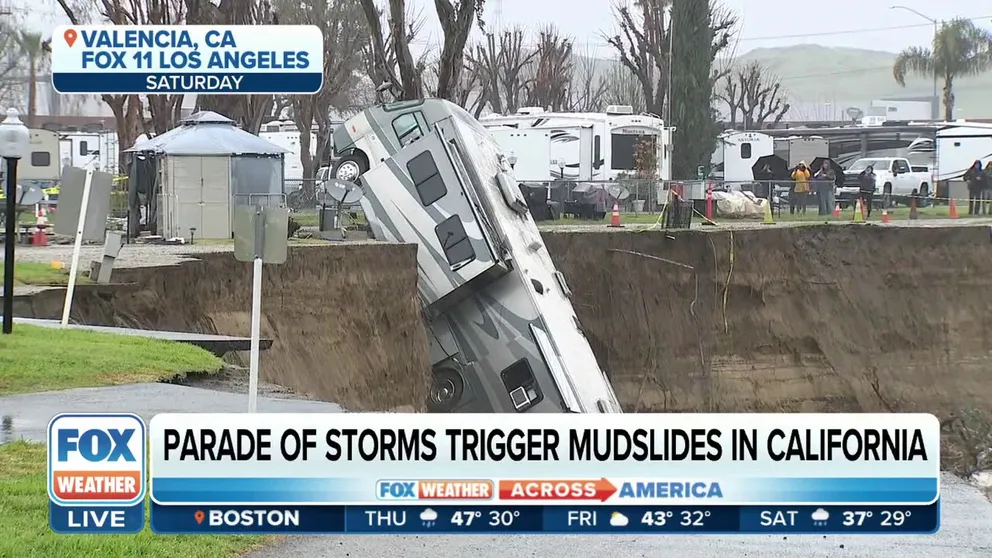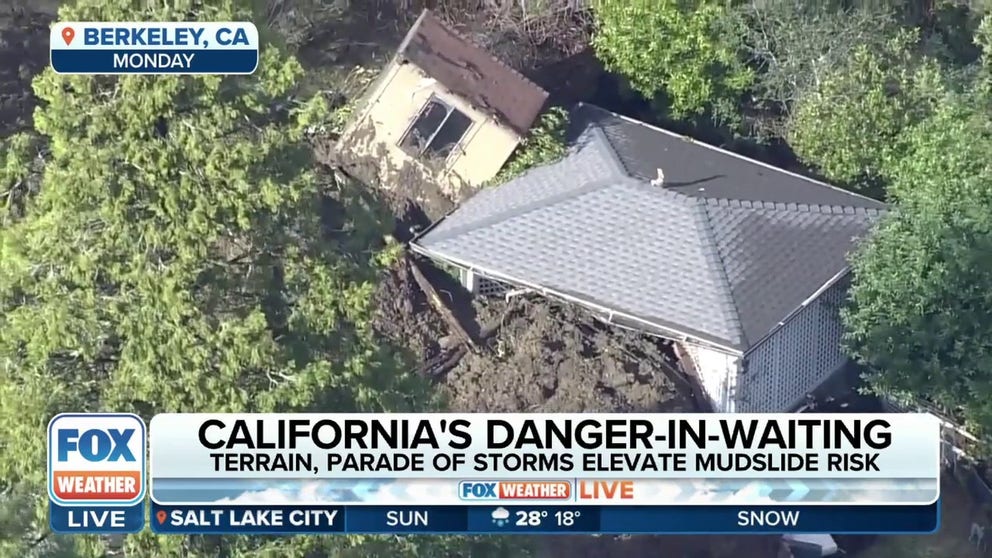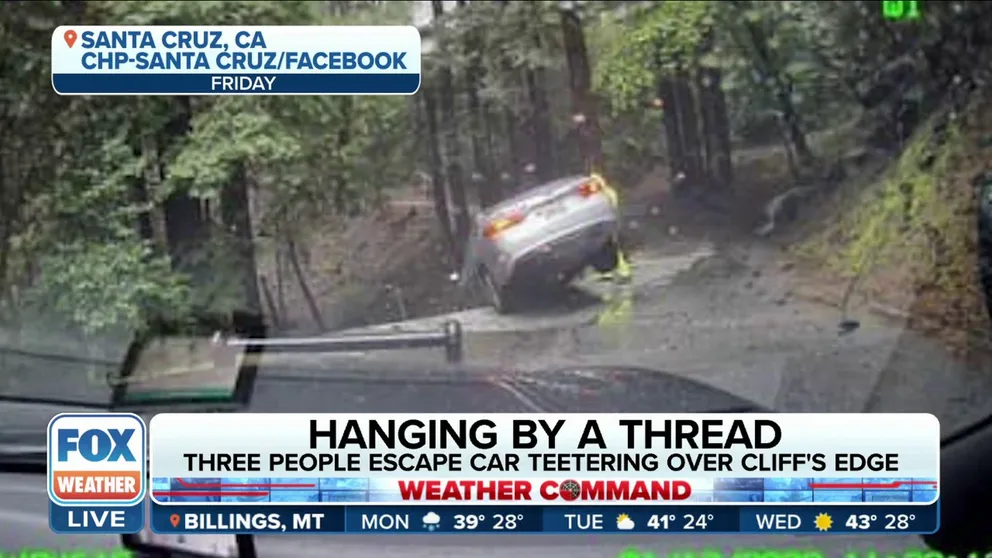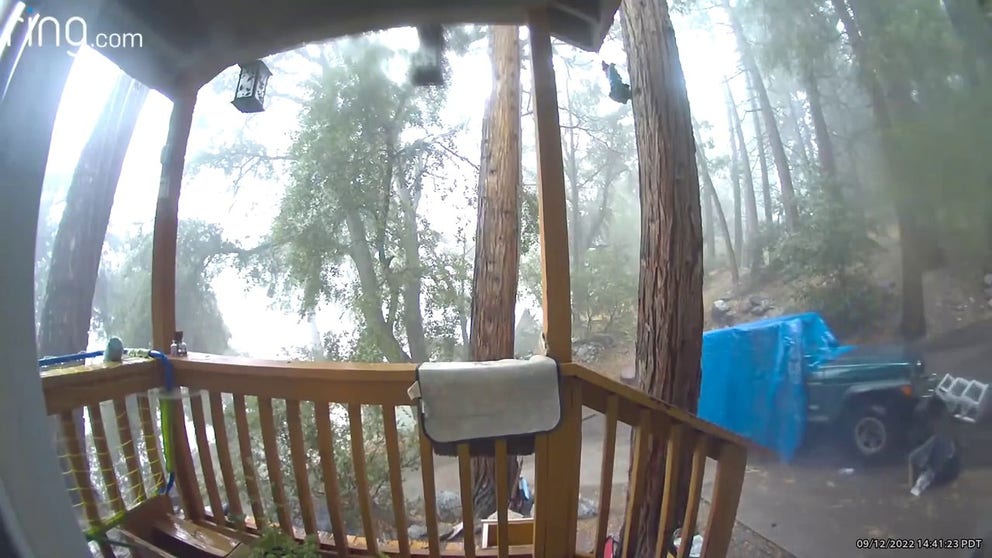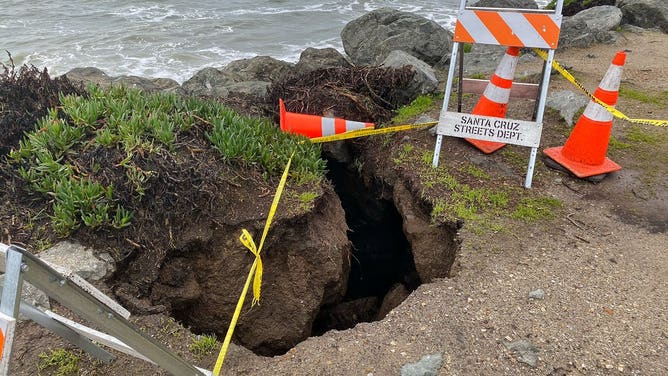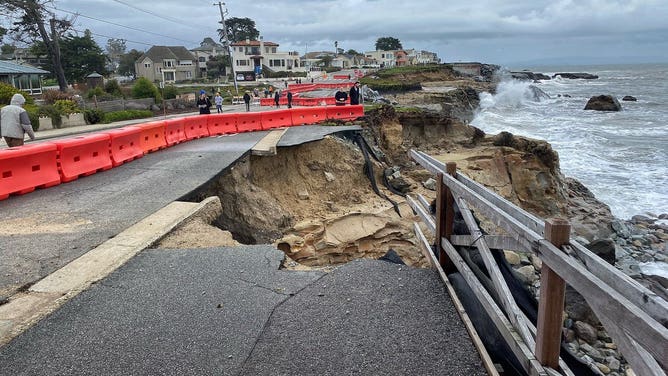Why California is primed for landslides
Saturated California will get a break from the rain, but the landslide threat will stick around. Find out why the state is so susceptible.
What sets the stage for landslides in California?
U.S. Geological Survey Landslide Hazards Program Research Hydrologist Matthew Thomas provides insight on FOX Weather.
An avalanche of boulders spilling onto a road, chunks of highway sliding down a hill and residents cleaning feet of mud off driveways after a landslide are scenes that Californians have seen over the past months.
A parade of atmospheric river storms dropped an entire year's worth of rain on some California cities in the first three weeks of the year resulting in jaw-dropping videos. Now a historic storm is following several others with more to come keeps homeowners nervous about the land moving around them.
California primed for mudslides
FOX Weather talked to University of Oregon professor, Josh Roering about why California is so susceptible to dangerous landslides, especially now.
FOX Weather calculated that statewide, an average of 10.56" of rain fell from Christmas Eve to mid-January. One area in the northern California coastal mountains got 64.1" of rain.
And even though the Golden State gets occasional breaks from the onslaught of heavy rain and snow, landslides are still a threat.
7 WARNING SIGNS A LANDSLIDE OR MUDSLIDE IS IMMINENT
Landslides carry away roads with California's heavy rain
FOX Weather Command takes a look at incredible footage from California of landslides triggered by a series of atmospheric river storms.
"Residents of California are still not out of the woods when it comes to debris flow and landslide threats," said Northwestern University's Daniel Horton. "Given the saturated soil, any additional heavy precipitation has the chance to form debris flows when enough of the surface runoff becomes channelized."
Watch a landslide: Boulders tumble down on a California freeway
A California Highway Patrol officer caught this rock slide in progress on SR-168 in Fresno County. "Avoid travel," the CHP advises. (Credit: @ChpFresno/ Twitter)
How do landslides happen?
All that water soaks into the earth or runs off. Unfortunately, rock and soil slopes are weakened when saturated, according to the U.S. Geological Survey. Then gravity takes over on steep terrain.
"And that's when the ground is really getting saturated. So there's less place for the water to go. And also the creeks are filling up. And we've also had a lot of fires in California recently as well. And that makes the ground much less permeable, much less able to absorb all that extra water," said Roering. " And so that combination of just already soaking rains and more coming and more coming starts to make it really, really dangerous conditions.
The state identified more than 500 landslides since the December/January storm series started. See the blue areas which also correspond to seem mountainsides.
A layer of heavy, water-soaked soil breaks free of its foundation and starts sliding. The rain runoff further erodes the now loose dirt and rocks. The new depression also channels the water and could result in a debris flow.
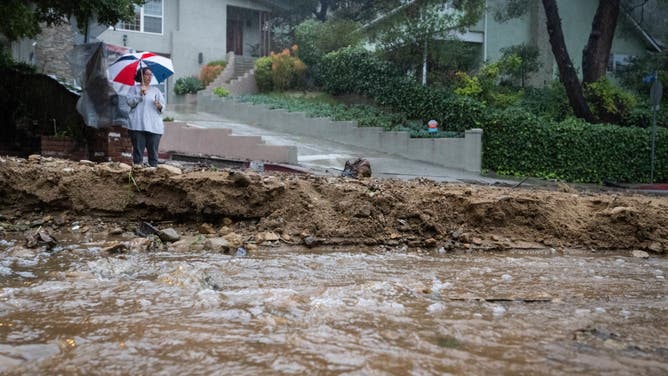
A mudslide in early January blocks this Studio City neighborhood.
(Getty Images)
"Debris flows are very dangerous and have been known to destroy roads, homes, and other structures and result in fatalities if people are not able to evacuate," said Daniel Horton, professor of Earth and Planetary Sciences at Northwestern University. "Debris flows speeds vary depending on the event, but can reach up to 35 mph."
Why is California so at risk for landslides?
While landslides can happen in every state, California is particularly at risk.
Burn scars from wildfires are particularly susceptible to debris flows. The USGS says as little as 0.3" of rain in 30 minutes to trigger a debris flow during an area’s first post-fire burn. A burn scar can take several years to recover. Most debris flows occur in the first two years after a fire.
WHAT EXCESS RAINS MEAN FOR BURN SCARS
Debris flow drags vehicle away from California home
A homeowner in Forest Falls, California captured the moments their vehicle was dragged away by a debris flow Monday
Earthquakes create stresses in the rock, which weakens slopes too. And erosion from waves creates steep slopes primed for landslides.
"Any area composed of very weak or fractured materials resting on a steep slope can and will likely experience landslides," states the USGS.
"California has a couple of things going for it when it comes to landslides. They've got a lot of young mountain ranges, "Professor Josh Roering of the University of Oregon explained why the state has so much steep terrain. And those things create a lot of steep terrain. There's a lot of loose soil and debris that can be mobilized really easily by these rainstorm events."
The state's coastal mountains are steep slopes. Add in the high population density living in those ranges. Streets, homes and parking lots are all manmade structures that can stress weak slopes, according to the USGS.
"What sets the stage for landslides in California is that it's a relatively young geologic setting. And what that means is you have a relatively rapid uplift of the mountain front and on those mountain frontier, very weak soils and rock," USGS Landslide Hazard Program Leader, Matt Thomas told FOX Weather.
"And when you add these kind of this confluence of weak soil rock on steep slopes, as well as the human modification of slopes like road building activities, that can further kind of exasperate the problem you've really set the stage for a landslide problem across the state," he continued.

File: Crews had to use explosives to blow this boulder to pieces to clear the road near Lake Tahoe.
(Cal Trans District 3 / FOX Weather)
CALIFORNIA FLASH FLOODING FORCES MONTECITO, OTHER CELEBRITY COMMUNITIES TO EVACUATE
"High river discharges reported across the state also have the potential to undercut banks which could further destabilize slopes along waterways, said Horton. "Tt should be noted that active precipitation is not a pre-requisite for landslide occurrence. Just a few years ago, the Mud Creek landslide on Highway 1 let loose several days after the rains stopped."
The drought compounds landslides, flash flooding, and debris flow dangers. Western states are currently in a mega-drought, the worst in 1,200 years, according to scientists.
"Drought can cause a hyper-dry condition in the soil, which induces ‘soil-water repellency,’" Chuxuan Li, Northwestern Ph.D. candidate, said. "This means the soil is so dry that it cannot absorb any water when the first big storm arrives, which in turn increases the likelihood of flash flooding and debris flows."
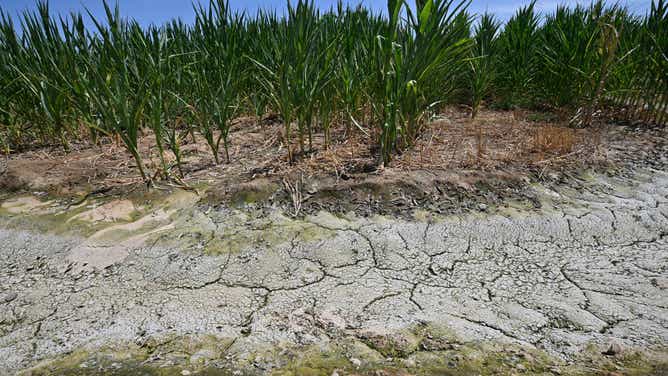
File: The dried and cracked soil in an irrigation ditch next to a corn field is seen on a farm in Fresno, California.
(ROBYN BECK/AFP via Getty Images / Getty Images)
Even as storms taper off, the water is still seeping into hyper-dry soils slowly. The weight of the water will stress steep slopes until the filters deeper and the earth stabilizes as it compacts again.
"We've learned a lot in the last couple of decades about these atmospheric river events. And they are the number one reason for causing rainfall induced landslides in the west all the way from Alaska down to Baja, Mexico," Roering explained. "So they are the mechanism that delivers these really intense bursts of rain. And we have steep topography and all of this loose debris and all that intense rain. It takes a lot of energy to drain it and it just prevents the water from getting out soon enough. And it makes all that stuff fluid and can start to flow downslope."
HOW TO WATCH FOX WEATHER ON TV

A pedestrian wades through a flooded neighborhood in Aptos, California on January 14, 2023. The death toll from a series of atmospheric river storms reached 19 people.
(Nic Coury/Bloomberg / Getty Images)
Landslides kill 25 to 50 Americans and cause more than $1 billion in damages yearly, says the USGS.
The FOX Forecast Center calls for one more storm, the last of the parade, on Wednesday for northern California. Over a week of dry weather will give the state some time to process all the rainfall before the next round of rain.
